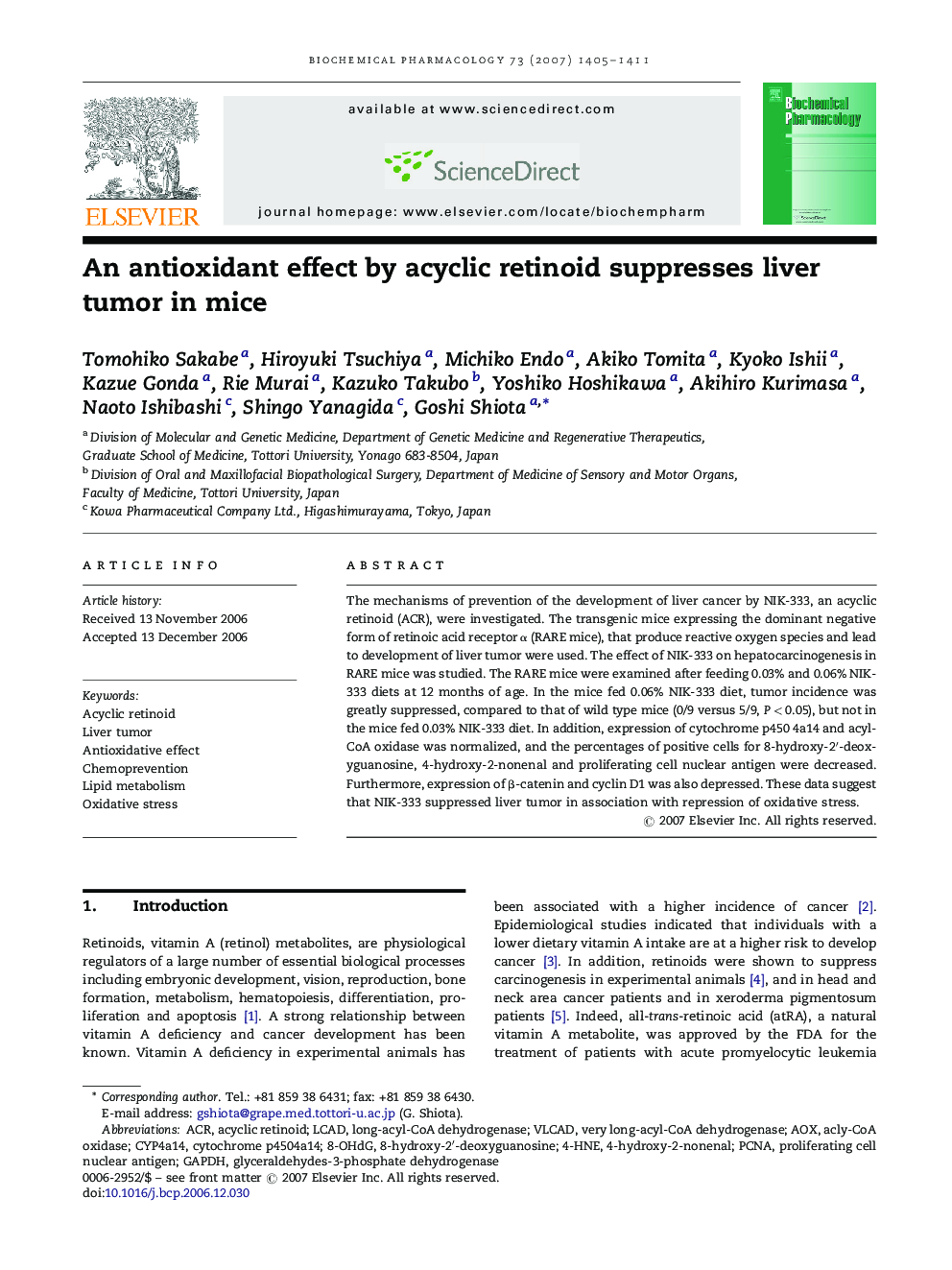| Article ID | Journal | Published Year | Pages | File Type |
|---|---|---|---|---|
| 2515718 | Biochemical Pharmacology | 2007 | 7 Pages |
The mechanisms of prevention of the development of liver cancer by NIK-333, an acyclic retinoid (ACR), were investigated. The transgenic mice expressing the dominant negative form of retinoic acid receptor α (RARE mice), that produce reactive oxygen species and lead to development of liver tumor were used. The effect of NIK-333 on hepatocarcinogenesis in RARE mice was studied. The RARE mice were examined after feeding 0.03% and 0.06% NIK-333 diets at 12 months of age. In the mice fed 0.06% NIK-333 diet, tumor incidence was greatly suppressed, compared to that of wild type mice (0/9 versus 5/9, P < 0.05), but not in the mice fed 0.03% NIK-333 diet. In addition, expression of cytochrome p450 4a14 and acyl-CoA oxidase was normalized, and the percentages of positive cells for 8-hydroxy-2′-deoxyguanosine, 4-hydroxy-2-nonenal and proliferating cell nuclear antigen were decreased. Furthermore, expression of β-catenin and cyclin D1 was also depressed. These data suggest that NIK-333 suppressed liver tumor in association with repression of oxidative stress.
